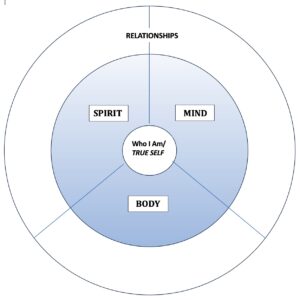Although North American society speaks of human development as passing from survival and safety > belonging and love > esteem > self-actualization, Hindus recognize four quite different transitions of the human evolutionary journey –
- the desire for pleasure
- the desire for success
- the desire for community
- the desire for liberation
As humans, we can find ourselves stuck at any one of these stages of spiritual maturation. Each stage is necessary to experience, but also temporary. Our challenge is to know when it is time to let go and move on. Last month I blogged about the consequences of pleasure seeking and last week about the desire for success/ambition. When considering the North American business environment, we witness ourselves stuck on achievement and in pursuit of success. Although I hear whispers from Cultural Creatives seeking community, spirituality and peace, as a global business ‘community’ this maturation is slow to evolve. Even though the business world has accepted strategic alliance and B2B collaboration as necessary for both survival and innovation, we are in the early stages of these developments toward community.
Organizational change consultants spent decades crafting their ability to create the essence of face-to-face community (harmony, creativity and productivity) within their clients’ workplaces. Today, these same consultants are challenged with creating the equivalent community experience virtually. Complex, expensive collaboration platforms were designed to facilitate this dilemma. I can’t speak for their successful adoption, but I can say that most of my virtual work with colleagues and clients still occurs via GoogleDocs, Dropbox, Skype and Free Conference—all of which are simple and free. As an avid seeker of community-building ‘software’ technology, I have experimented for over a decade trying to replicate the synergy and warm-fuzzies that a well-hosted face-to-face experience provides. This was my hope for the next generation of the Web, what was then called Web 2.0.
Web 2.0 was intended to further our ability to manage information and transform/communicate that information into value-added knowledge. Its unintended consequence was information overload, which precipitated the evolution of Web 3.0. With its focus on customization and specialization to meet individual needs, Web 3.0 may reduce the noise created by Web 2.0, but will it take us any closer to creating community?




